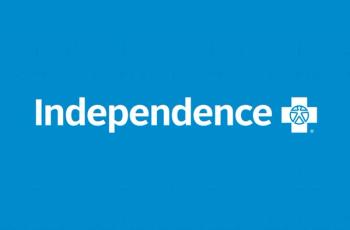
What payers can learn from Uber
What can standing in the rain trying to hail a cab teach us about delivering better service to health plan members? Quite a bit actually.
As more consumers choose their own health plans, health insurers are looking to other industries for strategies to improve the member experience and build customer loyalty. Rather than sticking to what worked before the Affordable Care Act (ACA), payers know they need to adopt proven techniques from industries where customer loyalty has always been fickle and where digital engagement is high.
Consider the taxi business, which is being disrupted by Uber, Lyft and a number of lesser-known mobile startups that have succeeded by streamlining and simplifying the customer relationship. These companies may serve a vastly different market, but their innovations hold the key to improving payers’ use of digital channels to engage members and build loyalty.
Uber’s innovation: A technology-enabled focus on the consumer
We’ve all likely had the experience of standing outside at rush hour in the rain trying to hail a taxi. If we did manage to flag down a cab, there is a good chance that the car was old and the driver unfriendly. Our experience as a customer simply was not the taxi company’s priority.
This lack of quality and efficiency in the industry was largely a result of regulation: Operating a taxi required a licensed medallion, and taxi companies focused on being compliant with regulations rather than on optimizing the customer experience.
Uber entered the scene and disrupted this status quo. By taking advantage of some regulatory loopholes, the company empowered consumers with choice and injected fresh competition into the industry. The result has been an improved consumer experience and lower prices.
Uber’s ability to challenge a century-old entrenched industry hinged on its early decision to completely reimagine how digital channels could be used to engage consumers, build loyalty and improve the consumer experience.
Rather than fixing one aspect of the existing taxi system, say by introducing mobile payments, Uber invented an entirely new experience to make the taxi ride seamless and enjoyable across the board. And it did so primarily using digital engagement.
The Uber app capitalizes on the ubiquity of the smartphone to significantly expand the capabilities of traditional taxi companies. Consumers can schedule a ride anytime, anywhere without making a phone call. They can track the car’s arrival time and location on their phone as they wait. And they can read and post reviews of their experience with a particular driver. In short, Uber uses technology to deliver ease, convenience and a superior experience to its customers.
This capability is what health insurers are looking to gain in a radically disrupted market.
How payers can deliver similar ease and convenience
Uber worked its way around regulations to introduce competition into the taxi industry. In healthcare, the ACA has played a similarly disruptive role.
By establishing the health insurance marketplace, the ACA has placed unprecedented power in the hands of consumers. Like taxi companies, payers must shift their focus from simply complying with regulations to proactively satisfying the consumer-or they risk being surpassed by the innovative Ubers of the industry.
The Uber example provides the key to effectively engaging consumers in an era of digital transformation-using technology to deliver convenience and an individualized experience.
Challenges of digital engagement
Like healthcare in general, health insurers lag other industries in their adoption of technology. Most customer data is siloed, stuck in a particular technology infrastructure or member designation. Vision member information is often handled separately from dental information and medical information, even when the customer is the same.
The challenge this creates is that insurers lack the kind of insight into individual consumer histories and preferences that other, more consumer-centric industries enjoy.
When consumers interact with Uber, or Amazon, or Apple, they are no longer surprised to learn that the company knows their last purchase, their buying preferences, their birthdays and other personal information. When insurers fail to deliver an equally seamless and simple experience, members can become frustrated.
Another challenge is that, unlike Uber, Amazon or Apple, health insurers have relatively few touchpoints with members and therefore fewer opportunities to build loyalty. Creating more touchpoints with members and building affinity whenever a touchpoint occurs-from enrollment to onboarding to appointment reminders to wellness programs-is therefore critical.
Intelligent use of technology enables insurers to manage the member’s experience consistently across these touchpoints.
The ideal member experience
A critical aspect of engaging members is to deliver a unified, seamless experience across the channel or device of the member's choice. However the member chooses to engage with the insurer, whether it be via smartphone, laptop, landline, email, or online chat, the plan must be ready to meet (and even anticipate) the member’s needs.
Consider the following example of a unified, digitally enabled member experience:
A mother, who is the main care coordinator for her family, is two hours away from home at her son’s soccer tournament. When her son hurts his ankle, she doesn’t know where to take him to get care. She doesn’t know if her plan will cover a trip to an urgent care center in the area. She takes out her smartphone and logs in to the health insurer’s mobile app. The app identifies her location and displays all of the in-network urgent care centers, hospitals and physicians nearby. It also displays how much of her family’s deductible has been met and the cost of each care setting.
The mother still has a question about her care options, so she decides to contact the insurer. She goes to the "Contact Us" page in the mobile app, where she sees the current wait time to speak to an agent. Since the wait time is only two minutes, she decides to stay on the line instead of opting to have an agent call her back. The insurer’s system recognizes that the mother and her family have been loyal members for five years, so it automatically routes her call to the premier customer service team. When the agent comes on the line, the agent has information about her family’s plan, health history and preferences in front of him. The agent quickly answers her question, and she heads off to the local urgent care with no anxieties about her insurance coverage.
That is the level of convenience and service that consumers have come to expect in any marketplace, and such service will be essential to maintaining member loyalty as it becomes easier for them to move from one plan to the next.
Fortunately, health insurers seem ready to make the digital transformation required to succeed in the new healthcare environment. Many are taking the first step, consolidating data from different plan environments onto a single technology platform and, in turn, creating a single view for understanding the member’s full experience. With such a foundation in place, insurers will be prepared not only to engage members today but to manage them throughout the consumer lifecycle.
Anand Natampalli is vice president, global sales & business development, for
Newsletter
Get the latest industry news, event updates, and more from Managed healthcare Executive.






















































